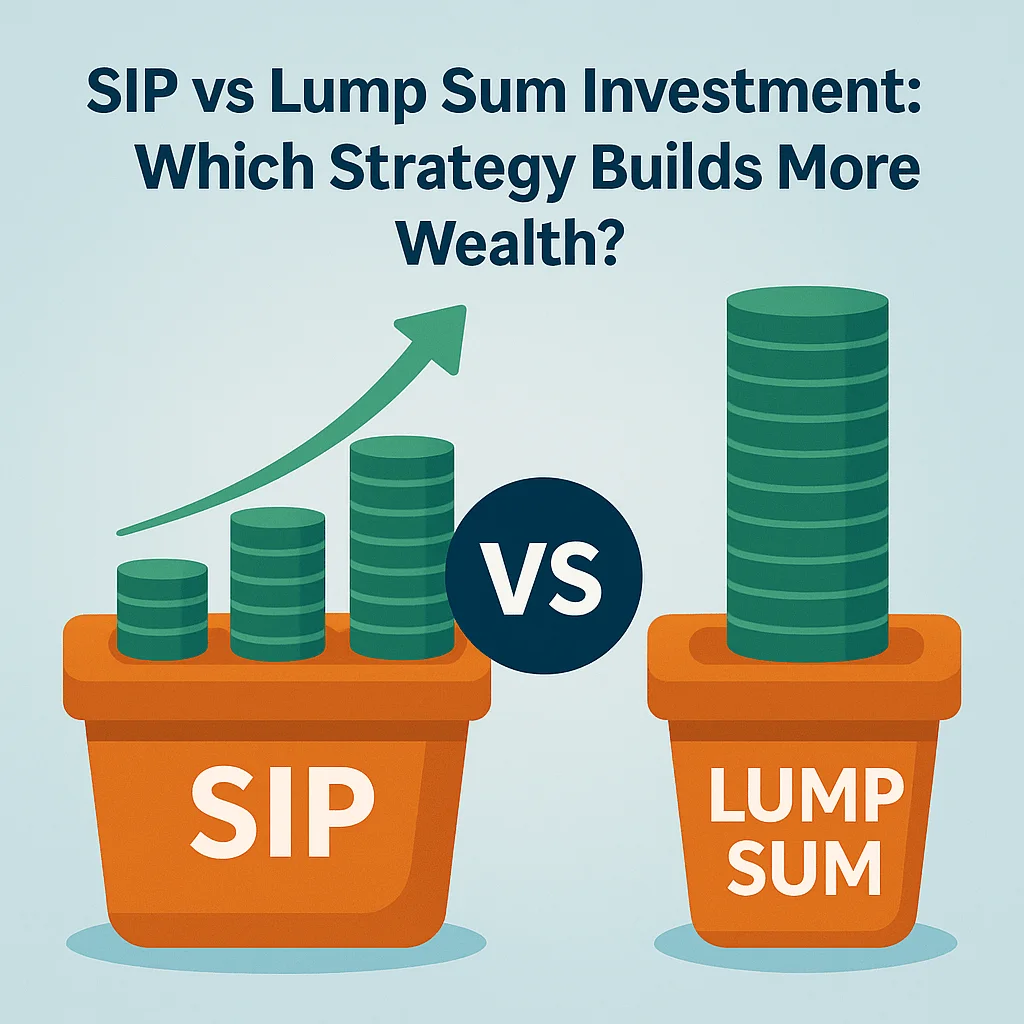Introduction: The Smart Way to Start Investing
If you’ve ever wondered how people grow their money steadily without constantly watching the stock market, the answer often lies in one simple tool — the Systematic Investment Plan (SIP). A SIP allows you to invest a fixed amount regularly in a mutual fund scheme, enabling you to build wealth over time through disciplined investing.
Unlike lump-sum investments, SIPs let you start small and benefit from the power of rupee cost averaging and compound interest. Whether you’re a salaried professional, student, or early investor, SIPs can be your gateway to long-term financial freedom.
💡 What Is a SIP and How Does It Work?
A Systematic Investment Plan (SIP) is an automated investment method where a fixed sum is invested periodically (monthly, quarterly, or weekly) in a chosen mutual fund. Each contribution buys fund units based on the Net Asset Value (NAV) of that day. Over time, you accumulate more units — and as your fund grows, so does your investment value.
Here’s a simple example:
- You invest ₹5,000 every month in a mutual fund with an average annual return of 12%.
- Over 10 years, your total investment = ₹6,00,000.
- But your wealth grows to approximately ₹11.6 lakh — nearly double your contribution!
This is the magic of compounding — earning returns on both your initial investment and accumulated gains.
📊 Benefits of Investing Through SIPs
- Affordability – Start with as little as ₹500 per month.
- Discipline – Encourages consistent investing habits.
- Rupee Cost Averaging – Reduces market timing risk by averaging purchase cost.
- Power of Compounding – Generates exponential growth over time.
- Flexibility – Start, pause, or stop your SIP anytime.
- Goal-Oriented – Perfect for achieving long-term goals like buying a home, retirement, or children’s education.
📈 Why SIP Calculators Are Important
A SIP calculator helps you estimate how your investment will grow over time. It considers factors like:
- Monthly investment amount
- Investment period
- Expected rate of return
By adjusting these values, you can visualize your future corpus and plan smarter.
Try the free online SIP calculator at www.sipcalculator.tech to forecast your returns instantly.
🧮 The Formula Behind SIP Returns
The standard SIP maturity formula is:
M = P × [(1 + r/n)^(n×t) – 1] × (1 + r/n) / (r/n)
Where:
- M = Maturity amount
- P = SIP amount invested regularly
- r = Expected rate of return (annual)
- n = Number of SIPs in a year (usually 12)
- t = Tenure (in years)
This formula helps investors estimate how much their SIP will be worth at the end of the chosen tenure.
💬 Common Mistakes to Avoid
- Stopping SIPs during market downturns – that’s when you buy more units cheaply.
- Ignoring inflation – always invest with real, inflation-adjusted goals.
- Not reviewing funds annually – performance changes; be proactive.
- Investing randomly – align SIPs with specific financial goals.
❓ FAQs About SIP Investment
1. Can I withdraw my SIP anytime?
Yes, SIPs are flexible. You can pause or redeem your investments anytime, though it’s best to stay invested long-term for maximum compounding.
2. Is SIP risk-free?
No, SIPs invest in mutual funds, which are market-linked. However, the risk is lower when invested for longer durations.
3. What’s the ideal duration for SIPs?
For equity SIPs, a minimum of 5–7 years is recommended to ride out market volatility.
4. Can I increase my SIP amount?
Absolutely. Many mutual funds offer a “Step-Up SIP” feature that lets you increase your contribution annually.
5. Is SIP better than a lump-sum investment?
For most investors, yes. SIPs reduce risk by spreading purchases over time rather than investing all at once.
Final Thoughts
A SIP isn’t just an investment plan — it’s a commitment to your financial future. With consistency, patience, and smart fund selection, even small SIPs can turn into significant wealth over time.
Start today with SIP Calculator and see how your money can grow effortlessly.
🔹 Key Takeaways
- Understand your SIP goals and tenure clearly.
- Review your mutual fund performance periodically.
- Invest consistently for long-term wealth creation.

